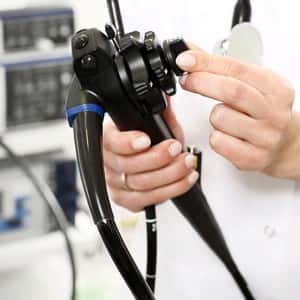
Simethicone is a common ingredient in over-the-counter anti-gas products, including gas relief drops for infants. It is an anti-foaming agent that lowers surface tension, allowing small bubbles to coalesce into large ones.
Using Gas Relief Drops During Diagnostic Procedures:
Doctors sometimes put gas relief drops containing simethicone in scopes used for colonoscopies and gastroscopies. The idea is to improve visibility when they fear bubbles will obscure their view.
That practice may not be safe, however. Researchers have found residue of gas relief drops in 19 of 20 scopes after disinfection. (The investigators used unannounced audits to confirm that technicians were cleaning the scopes according to manufacturer’s instructions.) Because gas relief drops for babies often contain sugar to make them palatable, the fluid droplets they found might possibly support bacterial growth.
The fluid was difficult to access, making it hard to get samples. In two of three samples that were obtained, however, analysis showed the presence of simethicone.
Simethicone contains silicone, which does not dissolve in water. This might explain why it persisted even after disinfection.
Are Disinfection Procedures Good Enough?
But the larger question is whether the procedures for cleaning these medical instruments are adequate to prevent infections from being transferred between patients. Some manufacturers have already notified doctors that simethicone is difficult to remove and might impede cleaning. The FDA does not control this off-label use of simethicone. But if patient safety is at risk, hospitals should ban this use during gastrointestinal scoping.

